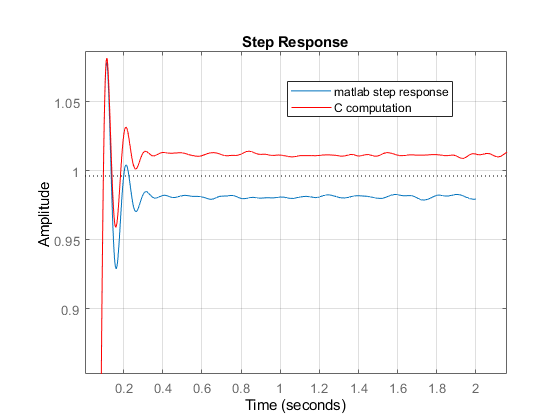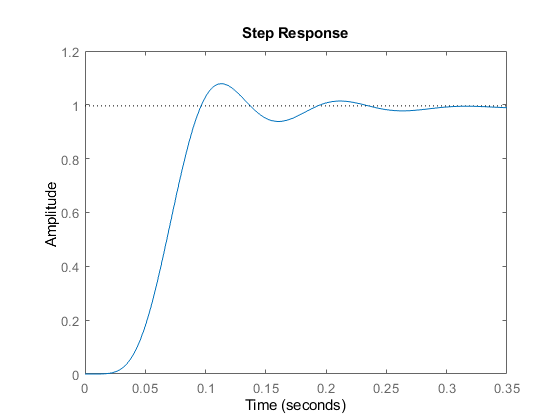I need to implement a basic 6th order Butterworth lowpass filter on a DSP that sampled data at 50kHz. I calculate the coefficients using matlab for a filter with the following step response: $$\begin{align} y[n] {} = & \frac{1}{a_0}(b_0 x[n] + b_1 x[n-1] + \cdots + b_P x[n-P] \\ & {} - a_1 y[n-1] - a_2 y[n-2] - \cdots - a_Q y[n-Q]) \end{align}$$
The coefficients of this filter are given as:
a =
1.0000 -5.9757 14.8789 -19.7584 14.7590 -5.8798 0.9760
>> b
b =
1.0e-13 *
0.0089 0.0533 0.1332 0.1776 0.1332 0.0533 0.0089
I tried implementing & simulating this filter in C but I keep getting an unstable response, I am not sure where the error is in my code:
#include <stdio.h>
#define N_LOWPASS 7
struct lowpass{
float bs[N_LOWPASS];
float as[N_LOWPASS];
float xs[N_LOWPASS];
float ys[N_LOWPASS];
int xpointer;
int ypointer;
};
struct lowpass lp={ {8.881784197001252e-16,5.329070518200751e-15,1.332267629550188e-14,1.776356839400251e-14,1.332267629550188e-14,5.329070518200751e-15,8.881784197001252e-16},
{1,-5.975723643994615,14.878912715306338,-19.758412157954773,14.758996633559045,-5.879789434468497,0.976015887552560},
{0},
{0},
0,
0
};
float update_lowpass(struct lowpass* lp,float xn){
//note : at the beginning of the function call, the pointers into the circular buffers point to the values that will be replaced
//update x[n] position in circular buffer
lp->xs[lp->xpointer]=xn;
//compute y[n]
unsigned int i;
float sum=lp->bs[0]*xn;
for(i=1; i<N_LOWPASS; i++){
sum+=lp->bs[i]*lp->xs[(lp->xpointer-i+N_LOWPASS)%N_LOWPASS]-lp->as[i]*lp->ys[(lp->ypointer-i+N_LOWPASS)%N_LOWPASS];
}
//update y[n] in circular buffer
float yn=sum/lp->as[0];
lp->ys[lp->ypointer]=yn;
lp->xpointer=(lp->xpointer+1)%N_LOWPASS;
lp->ypointer=(lp->ypointer+1)%N_LOWPASS;
return yn;
}
int main()
{
//simulate the step response of the filter
unsigned int N=50000;
float yout[50000];
unsigned int i=0;
for(i=0; i<N; i++){
float yn=update_lowpass(&lp,1.0);
yout[i]=yn;
printf("%f\n",yn);
}
return 0;
}
Update
After changing the data type of the floats to double the step response did show stable behaviour but the two solutions from Matlab and C did differ somewhat:
 Also, in both cases the filter response did not seem to settle toward a final value of 1 and did show some whiggling:
Also, in both cases the filter response did not seem to settle toward a final value of 1 and did show some whiggling:



1e-15precision onfloatwill never work. Also, see this for workarounds when the poles are ridiculously low compared to the sampling frequency. $\endgroup$